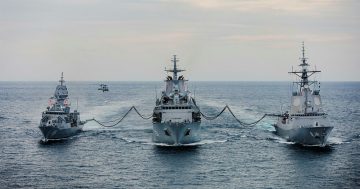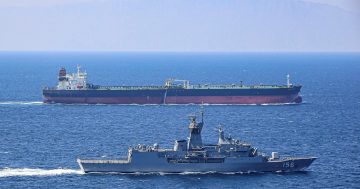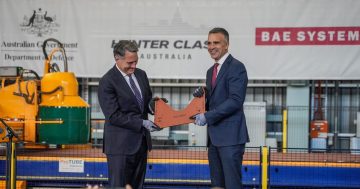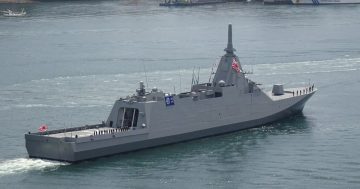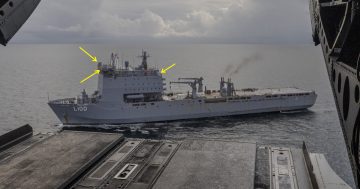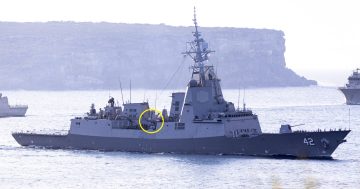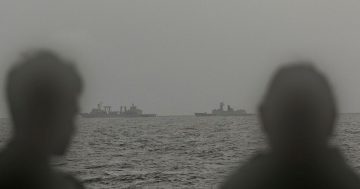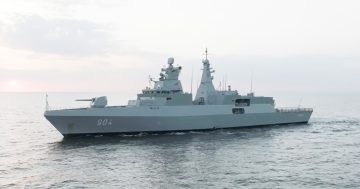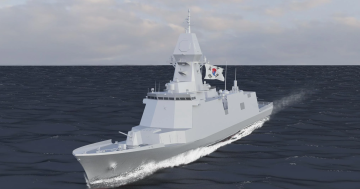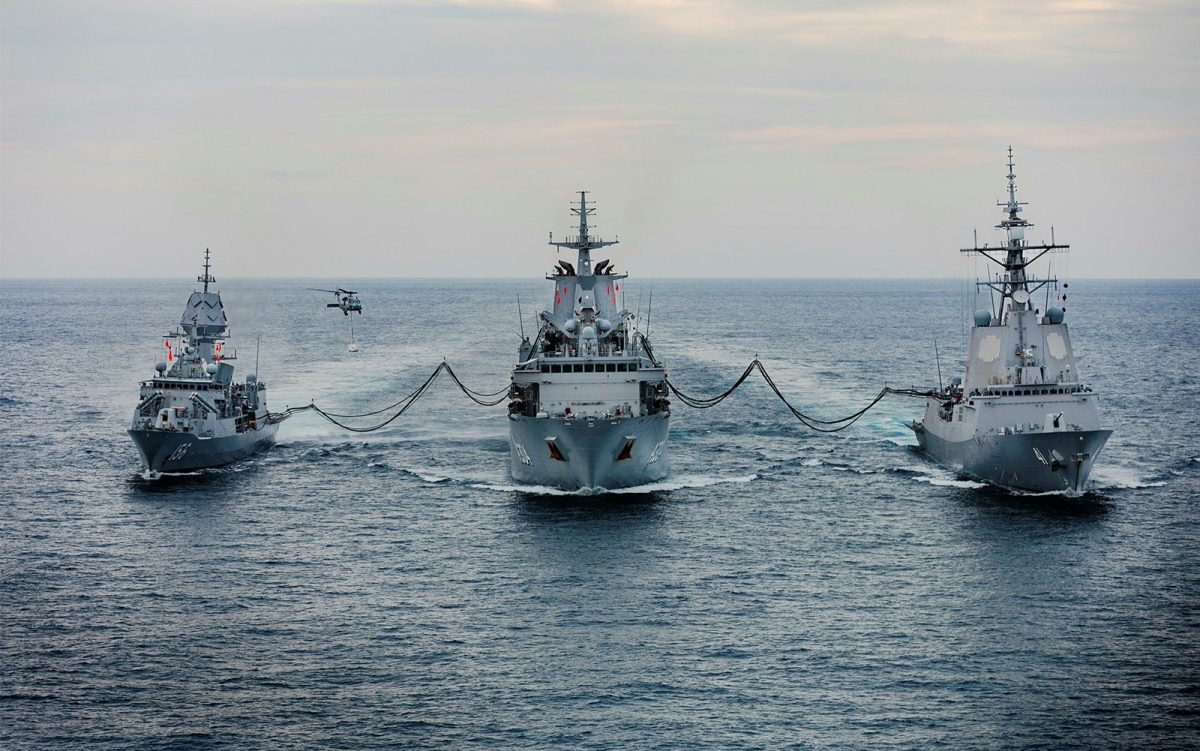
HMAS Stalwart (centre) conducts a replenishment of an Anzac-class frigate (left) and Hobart-class destroyer. Photo: ADF.
With the Royal Australian Navy planning to expand its surface fleet over the next decade, it has been left in the embarrassing situation of currently having no operational replenishment ships.
HMAS Stalwart, the second of two Supply-class Auxiliary Oiler Replenishment (AOR) vessels acquired by the Navy just three years ago has been berthed at Darwin for more than a month with engine defects requiring urgent repairs.
This comes after the lead ship of the class, HMAS Supply has been docked at Garden Island naval base in Sydney for more than a year with major mechanical defects.
The two vessels are based on Spain’s AOR ESPS Cantabria which was deployed to Australia in 2013 to fill in for the now-retired HMAS Success while that ship was having a double hull installed.
The Navy previously operated HMAS Success which entered service in 1986 and was decommissioned in 2019, and HMAS Sirius which was converted from a Korean-built commercial tanker and commissioned in 2006.
While HMAS Success could provide the gamut of AOR services to ships at sea including fuel, food stores, aviation fuel, spare parts and munitions, the much larger HMAS Sirius was able to transfer just fuel to ships at sea. HMAS Sirius was decommissioned in late 2021, and was recently reported as having been scrapped.
A limited tender was held in 2015 between Navantia and Daewoo Shipbuilding of South Korea for construction of two new AORs under the Navy’s Project SEA 1654 Phase 3 Maritime Operational Support Capability – Replenishment Ships requirement.
Navantia’s design was selected in April 2016, and the Commonwealth signed an acquisition contract worth $640 million for two AOR vessels to be delivered in 2019 and 2020.
HMA Ships Supply and Stalwart were built by Navantia at Ferrol in Spain, and were commissioned into service with the Navy in April 2021 and November 2021 respectively, a delay of about 12 months due to pandemic-related interruptions in building the ships in Spain and in adding additional equipment in Australia after delivery.
For the first time, the new Supply-class AORs gave the Navy two identical, modern, and brand-new support vessels, with significant commonality of systems, training and support with other Navy vessels. Navantia also designed the Navy’s three Hobart-class destroyers which were built in Adelaide, and two Canberra-class LHDs which were partly built in Spain and completed in Melbourne.
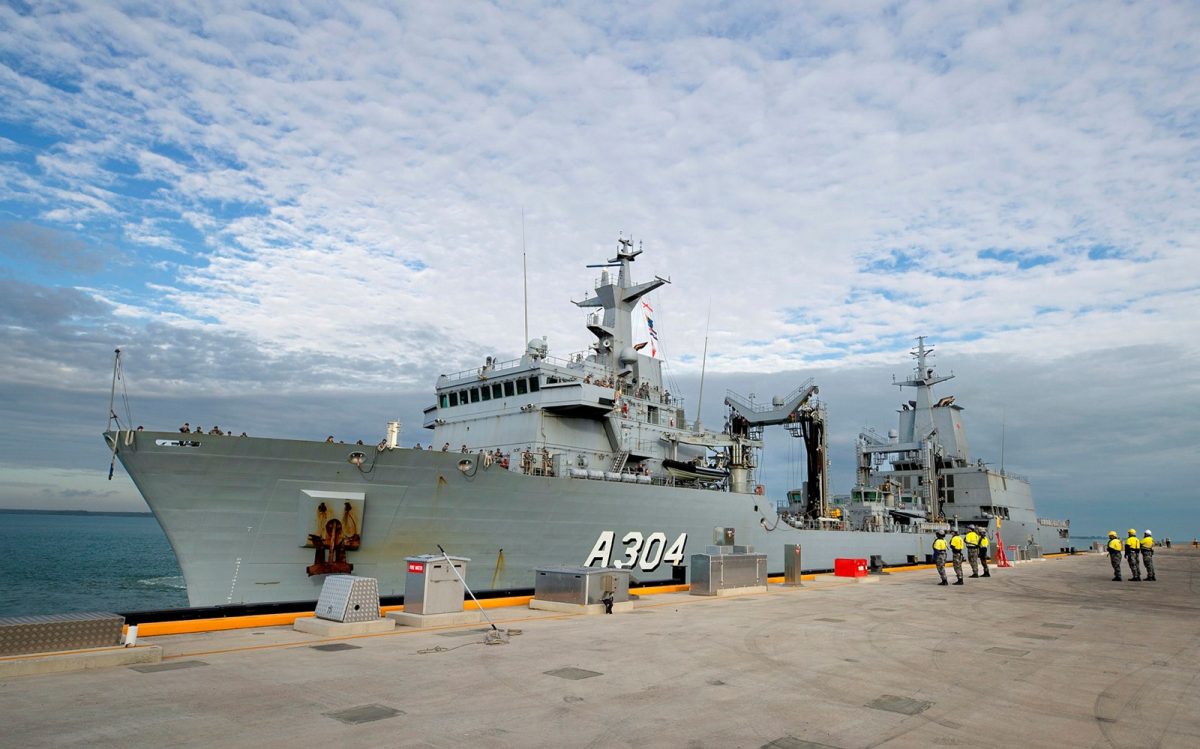
HMAS Stalwart arrives at Darwin’s new Kuru Dock on 10 May, where it has sat ever since. Photo: ADF.
Navantia Australia is the prime contractor to support the new AORs in service under an initial five-year $250-million support contract, reporting to Defence’s AOR Systems Program Office (SPO).
But the engine defects issue seems to have also been carried over from the two Canberra-class LHDs which, despite using a different azimuth thruster pod (Azipod) drive system, both suffered from mechanical issues in their first few years of service.
An ABC report says HMAS Stalwart, which docked at Darwin’s newly built Kuru wharf at HMAS Coonawarra on 10 May, has extended its stay there while Defence investigates the extent of its mechanical problems.
This is on top of HMAS Supply being out of service for the past year and, according to Defence officials who testified to Senate Estimates in early June, potentially for at least a further 12 months.
When asked by the Senate Foreign Affairs, Defence and Trade Committee on 6 June about HMAS Supply‘s status, Chief of Navy VADM Mark Hammond said, “I do not want the committee to get the wrong idea; I am not satisfied with the availability of this ship”.
“This is a complex defect. Navantia has written to the department accepting liability; it will be repaired under warranty.”
The ABC report also confirmed the newer issues with HMAS Supply‘s sister ship.
“HMAS Stalwart has extended a port visit to Darwin to investigate engine defects that emerged on passage to Darwin. The crew are supported by contractors,” a Defence spokesperson said.
“The extent and cause of the required repairs are under investigation.”
The mechanical issues effectively leave the Navy with no sovereign capability to resupply its vessels at sea, during a time of heightened tensions in the region and increasing regional deployments and engagements by Australian vessels.
While replenishment evolutions from vessels from other nations can and frequently are conducted, these are usually done as part of exercises in order to train for interoperability.


